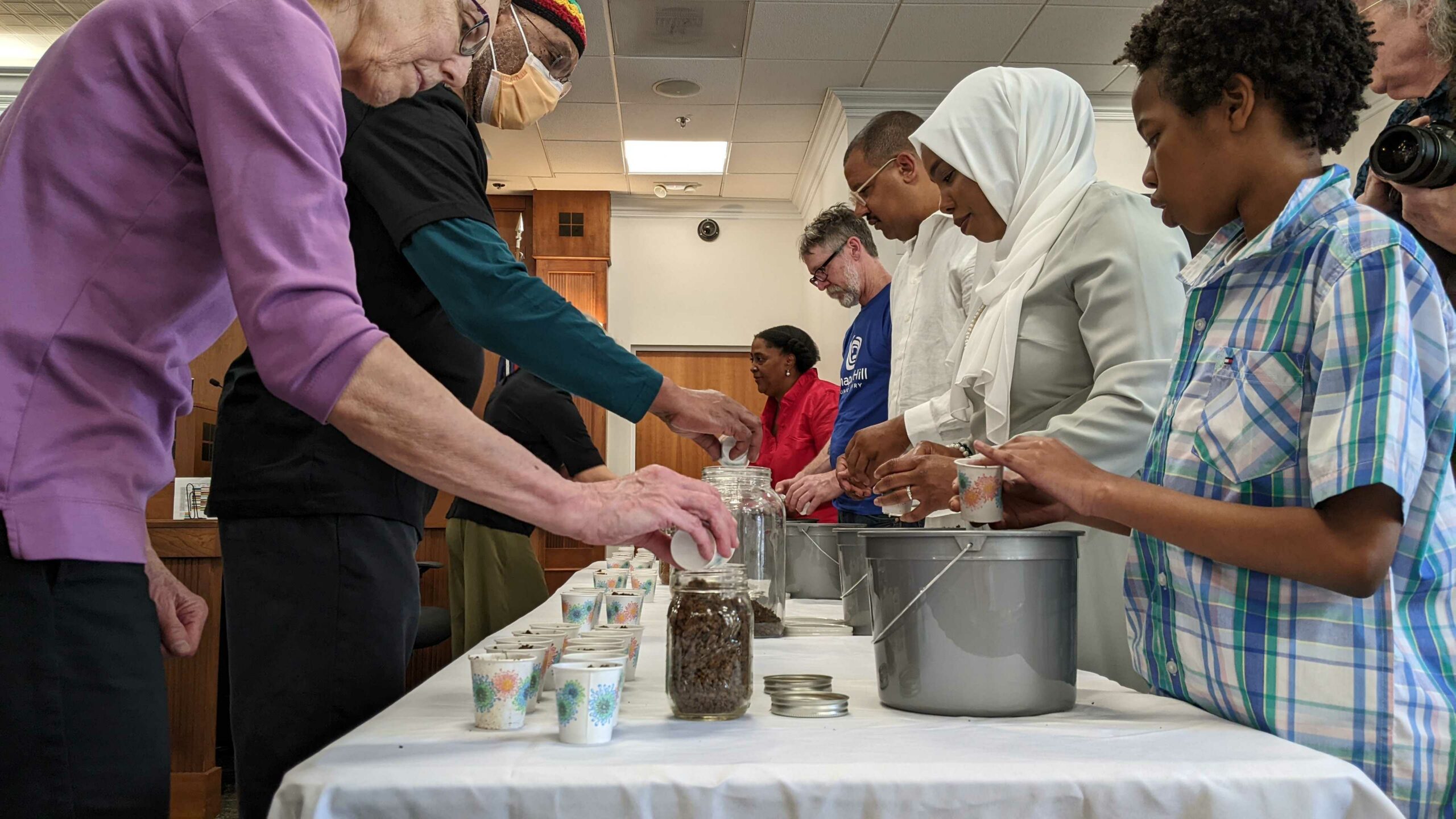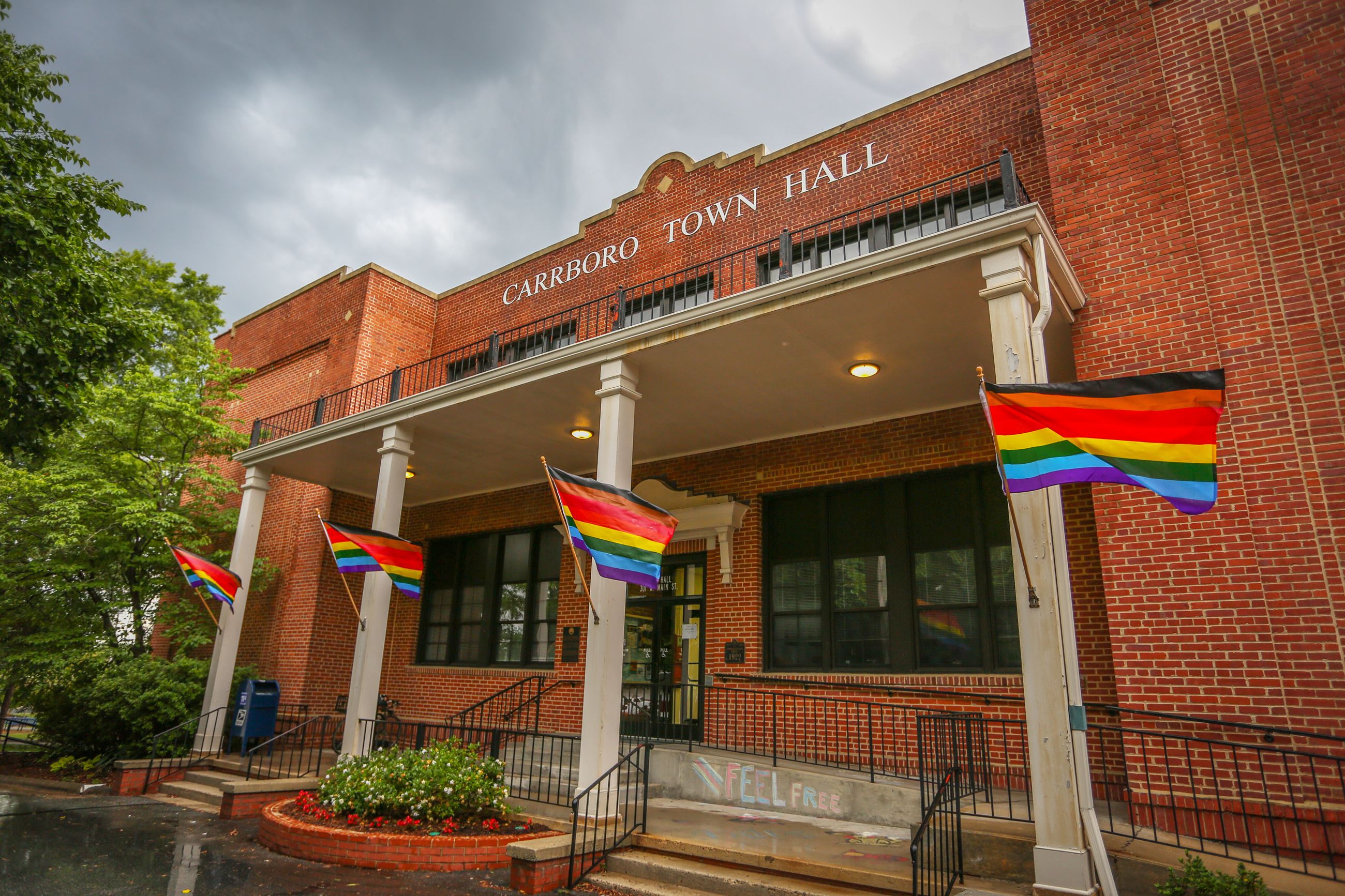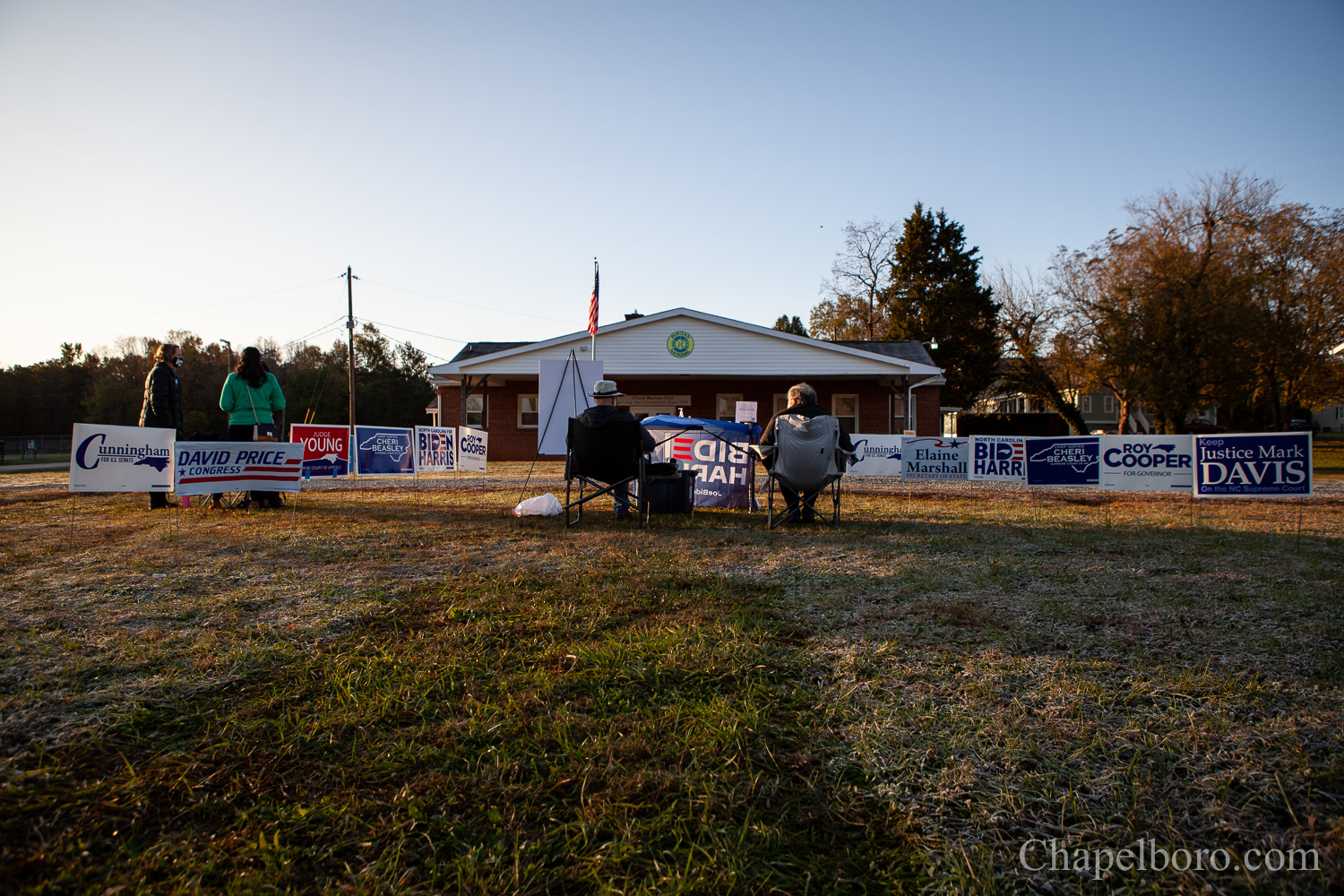South Carolina lawmakers are debating removing the confederate battle flag from the state capitol; Governor Nikki Haley endorsed the change after the mass shooting last week at a historically black church in Charleston. Meanwhile, the town of Hillsborough voted to let stand a memorial to the Confederacy on the Orange County Historical Museum—at least for now.
Weeks before the shooting at Emanuel AME in Charleston ignited national debate about the Confederate flag, the town of Hillsborough began a conversation about three lines of black letters above the entrance of the County Museum: “Confederate Memorial, 1934.”
“Since I’ve seen that lettering up there, it—you know, it makes me uncomfortable,” Hillsborough Town Commissioner Jenn Weaver said.
Weaver has been a vocal advocate for taking the memorial down since the Orange County Historical Society, which runs the museum, asked the town to remove the letters at the end of May. The Historical Society says the memorial deters residents from taking advantage of the museum’s resources.
“If you don’t want to go in the building because of the fact that it has a Confederate memorial across the front that makes you feel unwelcome, then you’re not able to enjoy a museum that we have here for our community,” Weaver said.
The Confederate memorial debate is a complicated and emotional issue for many southerners. Some Hillsborough residents say the memorial should stay as a remembrance of the Confederate soldiers who died in the Civil War. But University of North Carolina History Professor W. Fitzhugh Brundage says many Confederate memorials, especially those built after 1900, weren’t constructed just to honor fallen soldiers.
“More and more of the monuments were erected in public spaces, in front of courthouses, conspicuous thoroughfares, etc. And those monuments had a much broader goal, which was to impose a Confederate version of the past on the public as a whole. So they were intended to be didactic not just about loss and grief, but about the redemption of the Confederate cause.”
The building at the center of the Hillsborough debate wasn’t always a museum. The United Daughters of the Confederacy funded its construction as a whites-only library and a memorial to the Confederacy. Brundage says he can’t be certain how directly the Hillsborough memorial can be tied to a white supremacist agenda. But as a whites-only library and a Confederate memorial, he says it certainly was a product of a white supremacist mentality.
“Those women and the generation that they were part of were erecting a monument with little thought to being members of a diverse society in which all citizens, all residents for that matter, should be comfortable in public spaces,” Brundage said.
On Monday, the Board voted 3 to 2 against Weaver’s motion to take down the Confederate memorial lettering. Mayor Tom Stevens and other town commissioners said the Board needed more time to hear public comment on the issue. The Historical Society also says it needs more time to decide how it will incorporate the building’s history into its exhibits.
Related Stories
‹

French Manufacturer Shares Plans to Relocate U.S. Operations to HillsboroughGov. Josh Stein’s office shared the French manufacturing company CITEL is planning on relocating its U.S. business to Hillsborough and will invest $12.5 million in the project.

Hillsborough Man Wins $100,000 Playing New NC Lottery GameHillsborough resident Nichalis Rider bagged a $100,000 prize by playing one of the North Carolina Education Lottery's digital instant games.

'Do Not Forget Us': Soil Collection Ceremony Held for 5 Orange County Lynching VictimsOrange County community members gathered Saturday afternoon for a soil collection ceremony for five lynching victims killed in 1869.

New Orange County Aquamation Business Aims to Provide Eco-Friendly ComfortHunter Beattie is still relatively new to working around death. The Orange County resident made a significant career change one year ago when he switched from working in real estate and decided to create one of the handful of aquamation services offered in North Carolina. Sitting in the welcoming area of his Hillsborough […]

Town of Hillsborough Discusses How to Enforce New LGBTQ ProtectionsThe Town of Hillsborough is evaluating how to enforce violations of its nondiscrimination ordinance after having passed new LGBTQ protections earlier this year.
![]()
Hillsborough: Public Safety, Abortion Resources and Survey ResultsHillsborough Mayor Jenn Weaver joins 97.9 The Hill's Brighton McConnell on Tuesday, September 7. She shares details on her Labor Day holiday, as well as thoughts on state and local government news, like Texas' new abortions law and North Carolina's police reform.

Orange County Governments Commemorate Pride Month, to Host EventsThe towns of Carrboro, Chapel Hill and Hillsborough are all celebrating and commemorating Pride Month this June with several events and public displays of support.

Orange County Sheriff's Office Charges Man for Self-Titled 'Biggest New Year's Eve Party'The Orange County Sheriff’s Office charged a Burlington resident for violating North Carolina gathering limits on New Year’s Eve, as he hosted an outdoor party to ring in the new year. A release from the sheriff’s office Friday said Jacob Alfred Kurtis Bethea, 30, will face charges of violating the state’s executive order by operating […]

Staggering Number of Early Votes Leads to Low Election Day Turnout in Orange CountyElection Day looked a little different this year as North Carolina and the country took advantage of early voting like never before. In the Tar Heel state, more than 4.5 million voters cast their ballots ahead of Election Day. That is more than 95 percent of all North Carolina voters who cast ballots in 2016. […]
![]()
North Carolina Mayors: 'We Cannot Tolerate This Kind of Police Violence Rooted in Systemic Racism'Over a dozen mayors in North Carolina have signed onto a letter condemning the actions of the Minneapolis police officers involved in the death of George Floyd and supporting the peaceful protests organized in the wake of Floyd’s death. Read the complete statement below: As mayors of cities in North Carolina, we have come together […]
›









